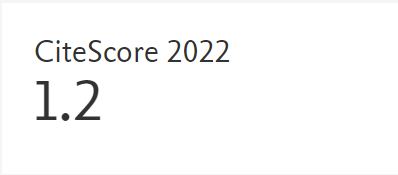PCA reduction in naphthenic base oils by optimizing HDT conditions
Resumen
Los PCA están relacionados con el contenido de Policiclo Aromáticos de más de tres anillos y moléculas asociadas de nitrógeno y azufre, los cuales son considerados como compuestos tóxicos. Hacer control de PCA es tarea compleja, pues la producción de Bases involucra diferentes procesos industriales y
muchas variables de control como presión, temperatura, calidad de carga, catalizador, etc. Este estudio se enfoca en el control de la temperatura de hidrotratamiento como variable principal en la reducción de PCA en las bases Nafténicas. Se tomaron dos fracciones de destilado Nafténico de la planta
industrial y se hidrotrataron en planta piloto a diferentes temperaturas. Los resultados muestran que los PCA son reducidos a medida que se incrementa la temperatura de hidrotratamiento; sin embargo se encontró una temperatura óptima de máxima reducción por encima de la cual se invierte el equilibrio termodinámico de las reacciones de hidrogenación de aromáticos, lo cual incrementa por consiguiente el contenido de PCA. Basado en lo anterior se estableció un quench de hidrógeno entre los dos reactores industriales para garantizar que el perfil de temperatura, debido a la exotermicidad de las reacciones, se mantenga en el rango óptimo de operación.
Referencias bibliográficas
ASTM Standard D-4294. (2008). Standard Test Method for Sulfur in Petroleum and Petroleum Products by Energy Dispersive X-ray Fluorescence Spectrometry. ASTM International, www.astm.org.
ASTM Standard D-2887. (2008). Standard Test Method for Boiling Range Distribution of Petroleum Fractions by Gas Chromatography. ASTM International, www.astm.org.
ASTM Standard D-2270. (2004). Standard practice for cal culating viscosity index from kinematic viscosity at 40 and 100ºC. ASTM International, www.astm.org.
ASTM Standard D-5307. (2007). Standard test method for determination of boiling range distribution of crude by gas chromatography. ASTM International, www.astm.org.
Ellison, R. J. & Simpson, B. J. (1994). The use of the dimeth yl sulphoxide (DMSO) extract by the IP 346 method as an indicator of the carcinogenicity of lubricant base oils and distillate aromatic extracts. CONCAWE, Brussels: 1-41.
IP 346. (1993). Determination of polycyclic aromatics in unused lubricating base oils and asphaltene free petroleum fractions - dimethyl sulphoxide extraction refractive index method. Standard methods for analysis and testing of petroleum and related products. 2. Chichester: John Wiley and Sons.
Mapiour, M., Sundaramurthy, V., Dalai, A. K., & Adjaye, J. (2010). Effects of the operating variables on hydrotreat ing of heavy gas oil: experimental, modeling, and kinetic studies. Fuel. 89: 2536-2543. https://doi.org/10.1016/j.fuel.2010.02.024
Qian, W., Yoda, Y., Hirai, Y., Ishihara, A., & Kabe, T. (1999). Hydrodesulfurization of dibenzothiophene and hydroge nation of phenanthrene on alumina-supported Pt and Pd catalysts. Appl. Catal. A: Gen. 184: 81-88. https://doi.org/10.1016/S0926-860X(99)00083-6
Wilson, M., & Kriz, J. (1984). Upgrading of middle distillate fractions of a syncrude from Athabasca oil sands. Fuel, 63: 190-196. https://doi.org/10.1016/0016-2361(84)90035-8
Descargas
Derechos de autor 2010 Creative Commons Reconocimiento-NoComercial-CompartirIgual 4.0.

Esta obra está bajo una licencia internacional Creative Commons Atribución-NoComercial-CompartirIgual 4.0.












